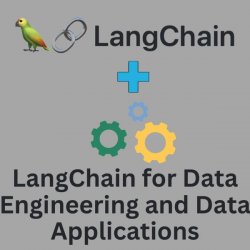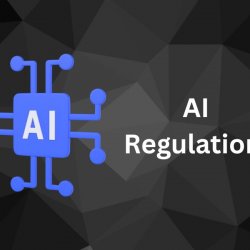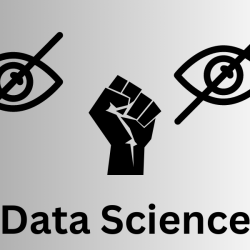Data Analytics: The Definitive Guide


Data Analytics: The Definitive Guide
Introduction to Data Analytics
There are several types of data analytics which can be used for different purposes. Descriptive analytics looks at past performance in order to explain what has already happened. Predictive analytics uses historical data to make predictions about future outcomes. Prescriptive analytics takes both descriptive and predictive approaches one step further by recommending potential courses of action based on your findings.
Data analysis provides a range of benefits for organizations such as cost savings, improved resource utilization, better decision making capabilities, and enhanced customer experience. However, there are also challenges associated with applying data analysis which include ensuring the quality of input data, managing complexity as datasets grow larger and more complex over time, dealing with privacy laws or regulations when working with sensitive information, etc. Data Science Course in Delhi
Definition of Data Analytics
Data analytics is the process of gathering, examining, and understanding data to derive meaningful insights. It’s a powerful tool that can provide meaningful insight into trends, relationships, and any patterns that are found in data sets from different sources. With data analytics, you can gain a better understanding of the complexities in your data and make decisions quickly and accurately.
When you’re exploring data with data analytics techniques, the goal is usually to find patterns or meaningful correlations between related pieces of information. You should be able to identify correlations or differences by looking at the aggregate statistical measures of variability in your dataset. This involves utilizing descriptive statistics such as averages, medians, mode frequencies, quartiles or any other applicable measure when describing variables.
To get the most out of your analysis it’s important to correctly assess which type of statistical analysis best suits your needs before beginning your exploration. Some situations may require prediction models or machine learning algorithms while others may benefit more from basic descriptive methods like averaging or counting values. By carefully selecting the right tools for each job you can make sure that the insights generated are accurate and reliable.
By definition, data analytics is an iterative process that helps improve decisions through continuous analysis and experimentation to determine what works best for your organization. Additionally it’s also important to consider all relevant external factors when making decisions as these will also influence the results of your analytics initiatives. Utilizing data analytics has become an essential tool for businesses to help them understand their customers better and make informed decisions faster than ever before.
Benefits of Using Data Analytics
Data analytics is quickly becoming one of the most important tools in the modern workspace, and for good reason. It can provide invaluable insights to help you make better decisions, become more efficient, and improve customer experience. Here’s a quick breakdown of the many benefits you can reap when you use data analytics to inform your business decisions.
Analytical Insights: Data analytics offers analytical insights that enable users to get a comprehensive view of their operations and projects. With the ability to interpret data from various sources and process it into meaningful information, businesses can gain deeper insight into the market trends affecting their industry, which helps them adjust their strategies accordingly. Data Analyst Course in Delhi
Interpret Data: With data analytics, you can interpret an array of data from various sources and extract actionable insights. This helps businesses make more informed decisions by uncovering hidden patterns and correlations that would otherwise go unnoticed.
Aggregated Information: By leveraging data from multiple sources, businesses can aggregate different information points into one comprehensive report which gives them a clearer understanding of what’s happening across different parts of their organization or industry.
Improved Decision Making: Businesses across all industries are increasingly relying on data driven insights to inform decision making. You’re able to take advantage of the insights yielded by data analytics engines to make well informed decisions about daytoday operations as well as long term strategies.
Robust Predictions: Data analytics also lets businesses create robust predictions based on past data sets and market trends — helping them plan accordingly for future business objectives or events such as product launches or marketing campaigns.
The Processes Involved in Analyzing Data
Collecting & Organizing Data – This involves gathering raw facts and figures from multiple sources before cleaning up and ordering them according to your specific needs. By ensuring that the data follows a clear structure, you can make it much easier to draw meaningful insights from it later on down the line.
Exploratory Analysis – After having collected your data, this stage involves exploring its contents in order to discover patterns, correlations, and trends. This is done mainly through visualization techniques such as plotting graphs or using heat maps. It’s also common practice during this stage to create summary statistics which provide an overview of the data points such as maximum, minimum or average values.
Statistical Inference – The information gathered through exploratory analysis gives you an idea of your data’s underlying characteristics, however statistical inference allows us to make predictions about uncertain elements within that same pool of information based on our observations so far. Data Science Institute in Delhi
Managing & Organizing Your Project
Data Management
The first step in managing your project is developing an effective data management plan. This includes setting up the right database infrastructure for your datasets. You need to consider what kind of data you’re dealing with, determine the most appropriate storage method, secure the data against potential attacks, and define backup procedures for both traditional databases as well as nontraditional databases like Hadoop.
Project Setup
Proper project setup is imperative for efficient execution of your project. This includes creating a timeline that covers every step of the process from start to finish. Additionally, it involves outlining an effective communication strategy so that all stakeholders are kept informed of progress throughout the project lifespan. If needed, utilize tools such as Kanban boards or Gantt charts to depict dependencies between tasks more clearly.
Planning & Execution
Once your project setup has been completed you can begin planning and executing each task within your timeline. When undertaking any task related to data analytics it’s important to think about what kind of information or insights you wish to gain from the analyses. Doing so will guide you in designing experiments accordingly and inform your hypothesis testing methodology when formulating conclusions from the results.
Popular Tools and Techniques Used in Analyzing Data
Data Analysis
Data analysis is the process of gathering, organizing, and interpreting data to answer questions or draw conclusions. It includes gathering both structured and unstructured data from sources such as databases, text documents, digital images, social media posts, etc. Through data analysis tools like Excel or Tableau, users can clean up data sets to make them easier to understand and interpret.
Statistical Techniques
Statistical techniques allow us to work with large amounts of quantitative data in order to identify trends and patterns. Techniques like correlation analysis help identify relationships between different variables so that meaningful insights can be drawn from the data. Other techniques like cluster analysis assist with segmentation by grouping similar items together based on certain characteristics.
Visualization Tools
Visualization Tools make it easier for humans to comprehend complex concepts by allowing us to visualize the results of our analyses. Popular graphics programs like PowerBI can be used to create visualizations such as charts and graphs that present our findings in easy to understand formats. These visuals provide a great way for stakeholders to quickly understand the results of urinalysis without getting bogged down in complex numbers or equations.
Ethical Considerations When Working With Big Data
Privacy is a major concern when dealing with big data. Sensitive data should be collected and managed responsibly in order to ensure the protection of consumer privacy rights. Companies should have secure safeguards in place that limit access to collected data to authorized personnel only. Additionally, organizations should have clear policies in place outlining how customer information will be used and stored. This can help ensure that customer data is not being used without their knowledge or consent.
Furthermore, businesses should understand the implications that come with using analytics software on collected data. This includes considering potential bias or errors in the algorithms that drive predictive models, as well as any ethical implications associated with automated decision making systems. It is also important to remember that individuals may be subjected to discrimination if certain types of personal information are used in algorithmic models. Companies should strive for fairness and accuracy when creating and employing predictive models built on Big Data.
There are a variety of other ethical considerations associated with Big Data as well; companies must understand and exercise their responsibility to protect consumers’ privacy rights while collecting and processing their personal data. By understanding the importance of ethical considerations when working with Big Data, companies can ensure they are providing responsible services and products built on reliable technology solutions.
Understanding the Basics of How To Use and Analyze Big Data
Once you have collected, stored, and secured your dataset, you are now ready for interpretation and analysis. There are a variety of tools available for this purpose such as statistical techniques, machine learning algorithms, and predictive analytics which can help uncover meaningful patterns in your data. With these tools, you can gain valuable insights into trends and correlations in your dataset that might otherwise go unnoticed.
Finally, it’s important to remember that understanding big data isn’t just about running analyses or gathering facts from your dataset — it’s also about providing meaningful context and actionable insight into how businesses can use their findings. This involves taking what was discovered in the data analysis process and turning it into strategic changes that will benefit the business as a whole. It also helps identify potential risks or opportunities that may not have been detected before.






Ingen kommentarer endnu